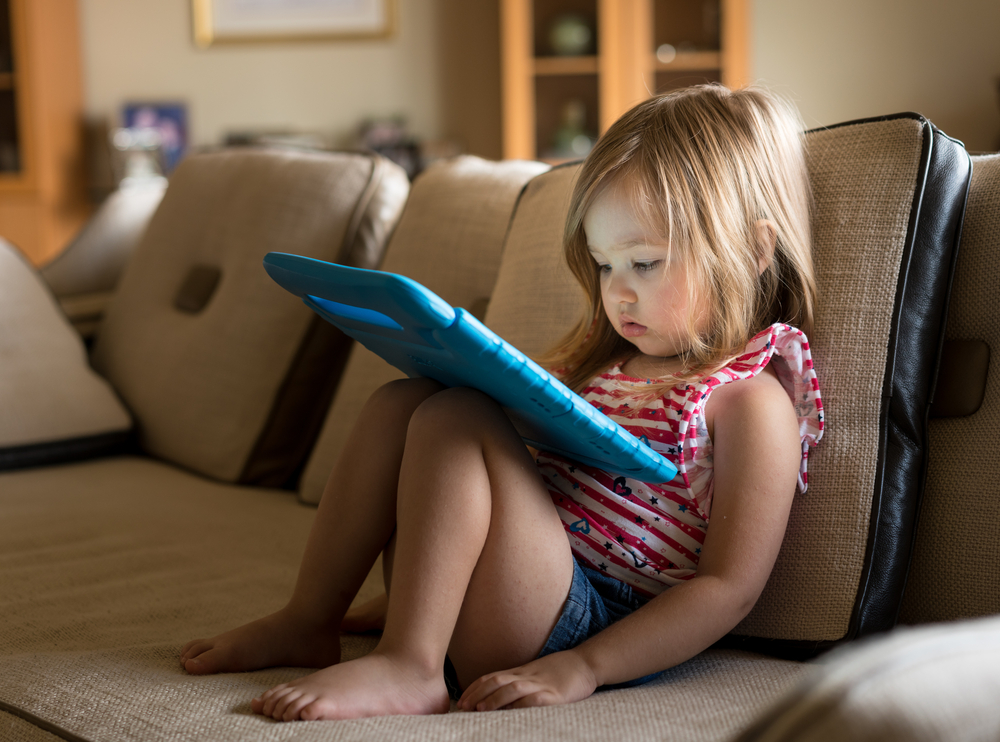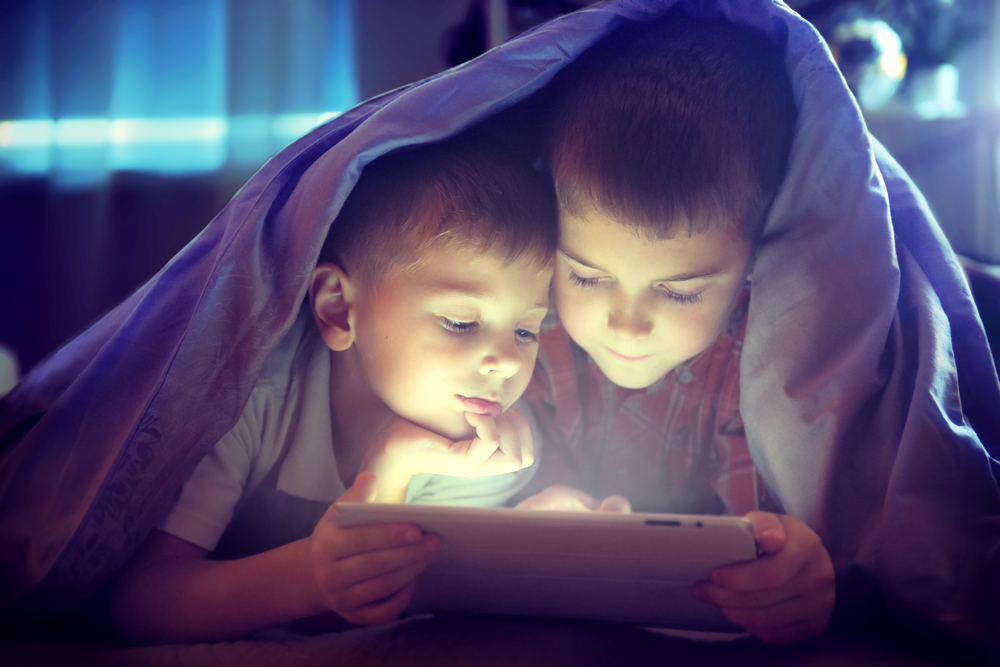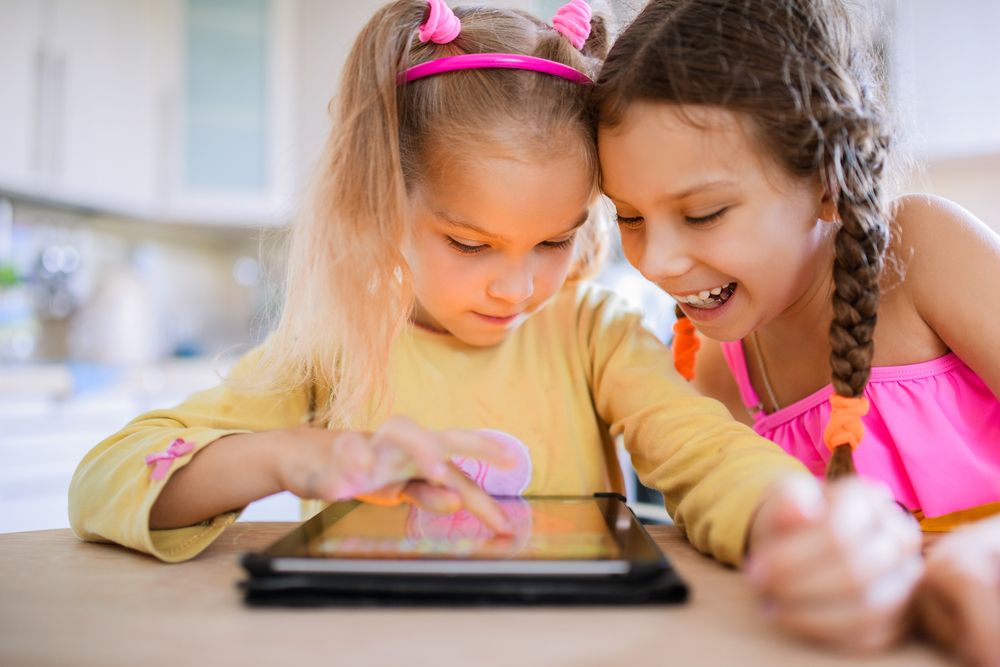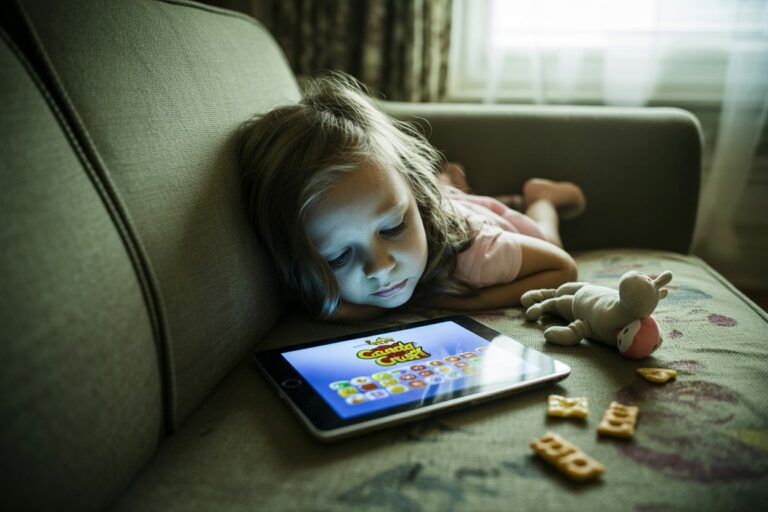
Parents of younger children know that screens can be both a lifesaver and a source of worry. From tablets to TVs, devices often keep kids entertained – but not all screen time is created equal. In fact, researchers have identified several device usage habits that are especially harmful for kids ages 5–10. Below we break down the worst ways children use devices (according to research) and why these patterns can negatively impact development, behavior, sleep, and learning. Each point is backed by studies, so you can feel confident you’re getting the facts – not just parental folklore.
7. Early Exposure to Social Media & Unsupervised Online Content
It might surprise you, but a lot of tweens – and even younger kids – are dipping their toes into social media these days. Allowing unsupervised social media or online video use at too young an age can spell trouble. Studies have found that kids who started using social media at age 10 or younger were significantly more likely to encounter online harassment and engage in problematic digital behaviors.
In one survey, these early starters were more likely to have online “friends” their parents disapprove of, to share rude or fake content, and even to cyberbully others. For children who may already struggle with body image, joining social media early tended to make those issues worse. Another big concern is sleep: research noted that kids who began social media use in late childhood had later bedtimes and fewer hours of sleep on school nights than their peers.
The constant feed of videos and posts can be overstimulating for a young mind, and the fear of missing out (“Just one more video!”) keeps them awake. On top of that, social platforms and video apps may expose kids to content they aren’t emotionally ready for – from violent imagery to inappropriate language – since algorithms aren’t perfect at filtering. All in all, unsupervised or early social media exposure is a device habit that researchers say can negatively affect kids’ safety, sleep, and self-esteem. It’s best to delay and closely monitor social media-type activities until kids are older.
6. Screen Time Right Before Bed

Many parents have learned the hard way that letting kids use devices before bedtime is a recipe for poor sleep. Late-night screen time is one of the worst habits for children’s sleep health. Bright screens in the evening can confuse the brain’s internal clock – the blue light from tablets and phones suppresses melatonin, the hormone that makes us sleepy.
The result: kids who get screen time just before lights-out often take longer to fall asleep and sleep less overall. In fact, one NIH-funded study of 7- to 9-year-olds found that on days when children used media devices before bed, they went to bed 34 minutes later and slept 23 minutes less per night on average.
Over a week or a month, that sleep loss adds up, and we all know how crucial sleep is for a child’s mood and concentration. It’s not just about the light, either – playing an exciting game or watching stimulating videos can rev up a child’s mind when it should be winding down. (We’ve all seen the bedtime crazies after an intense gaming session!) Research reviews report that 90% of studies on kids aged 5–17 have found more screen time linked to later bedtimes, fewer total sleep hours, and worse sleep quality. For perspective, a huge portion of kids regularly engage in these habits:
Research shows 75% of youth have electronics in their bedrooms, 60% use devices within an hour of bedtime, and 45% even sleep with their phones (using them as alarms). All of these practices are associated with poorer sleep outcomes in children and teens.
It’s clear that screens and sleep don’t mix well. Making the bedroom a no-device zone in the evenings is more than just a quaint idea – it’s an evidence-based way to help your child get the rest they need.
=> NEW: The Screen Time Revolution
5. Too Much Total Screen Time (Sedentary Overuse)
It’s not just when or how kids use devices, but also how much. Excessive overall screen time – basically, letting hours of the day be consumed by tablets, TVs, and game consoles – is strongly linked to a host of negative outcomes for kids.
One large 2023 review concluded that heavy screen use is correlated with higher risk of obesity, higher blood pressure, poorer sleep, more behavior problems, and even delays in developmental milestones. The physical impact is perhaps the most obvious: when children sit for long periods glued to a screen, that usually displaces active play. Not surprisingly, studies have repeatedly found that children who exceed about 1–2 hours of recreational screen time per day are more likely to gain excess weight. In fact, a meta-analysis noted that each additional hour of daily screen time increases the chance of childhood obesity by about 13%. Another study observed that kids with more screen time had lower cardiovascular fitness and strength – likely because time on devices replaces time running around.
Beyond weight issues, too much screen use can affect academic and cognitive skills. Researchers have associated excessive screen exposure with poorer school performance and learning difficulties in grade-schoolers. One study of 6- to 8-year-olds found that those who spent more hours on screens had lower scores in language and homework performance than those who spent less time. There are other subtle costs to marathon screen sessions as well: eye strain (dry eyes and headaches are increasingly seen in young gamers), posture problems (“text neck”), and less time for creative play or family interaction. The key message from the research is moderation – kids who stick closer to recommended limits (about 1–2 hours a day of high-quality content) tend to be healthier and do better in school than those who constantly exceed those limits. When screen time skyrockets, so do the risks.
4. Watching Violent or Age-Inappropriate Content
Handing a child an iPad with YouTube or letting them browse streaming platforms unattended can expose them to a wild west of content. Violent, scary, or otherwise age-inappropriate media is not just a harmless phase for kids – research consistently shows it’s one of the most toxic types of screen use.
Decades of studies have found that extensive exposure to on-screen violence causes increased aggression in children. Young kids who frequently witness cartoon fights, shootouts, or other violent acts can become desensitized to violence. They may start seeing aggressive behavior as “normal” or even try to imitate the fictional characters who solve problems with punches and explosions. In fact, experts at the American Academy of Child & Adolescent Psychiatry note that sometimes even one particularly violent program can trigger aggressive behavior in an impressionable child. It’s not only about aggression – inappropriate content can also fuel fears, anxiety, or confusion.
A too-spooky horror clip might lead to nightmares. News footage of real-world violence or disasters can be overwhelming for a young mind that isn’t ready to process it. And let’s not forget sexual content or profanity: children may stumble on videos or games with mature themes that they don’t understand, which can distort their view of relationships and language. Because kids aged 5–10 are still learning to distinguish fantasy from reality, violent or intense media can have a strong impact.
One classic example: after watching a superhero show with lots of fighting, a 6-year-old might suddenly start play-hitting siblings, truly believing it’s fun or acceptable because “that’s what heroes do.” Studies have also linked violent media exposure with kids becoming numb to the horror of violence and less empathetic to others’ pain. As a parent, one of the most important things you can do is vet and limit what your child watches or plays. The research is clear that unfiltered access to violent and adult content is among the worst digital habits for children’s mental health and behavior.
=> NEW: The Screen Time Revolution
3. Using Devices as a “Digital Pacifier” for Behavior
We’ve all been there: your child is having a meltdown in the grocery line or whining at a restaurant, and handing over your phone or tablet feels like the only way to restore peace. Occasionally, a quick digital distraction is fine, but experts warn that routinely using devices as an emotional pacifier is one of the worst habits for kids’ developing self-control.
A recent study in JAMA Pediatrics found that frequently calming upset 3- to 5-year-olds with a device was associated with more emotional outbursts and worse coping skills over time. Essentially, when a tablet or phone becomes the go-to soothe strategy, children miss out on learning how to manage feelings on their own. “Using mobile devices to settle down a young child may seem like a harmless, temporary tool… but there may be long term consequences if it’s a regular go-to soothing strategy,” explains Dr. Jenny Radesky, the lead researcher. Her study showed that kids (especially young boys) whose parents relied heavily on devices for calming were more prone to emotional dysregulation – think rapid mood swings, impulsivity, and big reactions to minor triggers. The devices basically displace opportunities for kids to practice calming down through other means.
Children never get to flex their “self-soothing” muscle if an iPad is always doing the job for them. Over time, these kids might become less able to handle frustration or boredom without a screen. So while handing over the phone stops the screaming in the moment (we’ve all relished that relief!), making it a habit can backfire on a child’s ability to develop patience and emotional resilience. Researchers encourage parents to try alternative soothing methods – from sensory activities (like hugs, music, or squishing play-dough) to simple breathing exercises – rather than reflexively using tech to tame tantrums.
2. Letting Screens Intrude on Family Time and Play
In our multitasking modern households, it’s easy to have screens perpetually humming in the background – the TV during dinner, the tablet at the breakfast table, or a smartphone always within reach. However, allowing screens to constantly interrupt or replace face-to-face interaction is a device habit that experts caution against. Young children, especially, thrive on live social interaction for their development.
When a TV is always on or a child is glued to a game during family time, there’s a real cost: fewer conversations, fewer imaginative games, and fewer moments of connection. Research has shown that high exposure to background TV (adult programs just running in the room) negatively affects kids’ language development, attention, and even their play quality. The reason is simple – both the parent and child get distracted by the screen, resulting in less talking and engagement with each other. One meta-analysis found that infants and toddlers who had more background media exposure ended up with lower language skills by preschool age. And it’s not just little ones; older kids also benefit when screens are set aside during family routines. Psychologists talk about “technoference” – when technology use (often a parent’s phone) interrupts everyday interactions.
This can lead kids to act out more to get attention. Even beyond background TV, think about a 8-year-old watching YouTube on an iPad during dinner instead of chatting with the family – they’re missing out on developing social and communication skills that happen around the table. Studies on family mealtimes indicate that kids have better vocabulary and emotional health when mealtime includes conversation (and no devices). So, while it’s not a “digital crime” to watch a family movie together (that can be bonding!), making screens a constant companion in the household blurs the line between family time and tech time, to kids’ detriment. The worst-case scenario is a home where everyone is in their own digital bubble. By turning off devices during key moments – meals, driving in the car, bedtime routines – parents can reclaim those moments for talk, silliness, and connection, which are crucial for a child’s development and for family bonding.
1. Binge-Watching Videos Passively

Endless hours of YouTube or cartoons might keep a child quiet, but passive video bingeing is one of the least enriching ways for kids to use screens. When children passively watch videos for long stretches (without interacting or thinking creatively), their brains aren’t engaged the same way as with active play or learning.
Research shows that passive screen time is linked to worse developmental outcomes compared to interactive screen use. In other words, a kid zoning out in front of a tablet isn’t getting the cognitive stimulation they’d get from more interactive experiences. Studies have found that having background TV on – another form of passive media exposure – can actually reduce children’s language skills and attention spans by cutting down parent-child interaction. Over time, too much passive viewing can mean fewer opportunities to practice talking, problem-solving, or using imagination.
Parents might notice the effects in real life: a child absorbed in videos all day may be more irritable or inattentive afterward. The bottom line from researchers: save screen time for higher-quality content and try to watch or play with your kids when you can, because solo passive binge-watching is one of the worst ways for young children to use devices.
=> NEW: The Screen Time Revolution
It’s amazing how something as ubiquitous as a tablet or TV can have such varied effects depending on how it’s used. As research continues to show, a little mindful control over device habits can make a big difference in our children’s well-being. The “worst” ways kids use devices – from late-night screen marathons to unsupervised social media scrolling – are not meant to shame anyone (every parent on Earth has allowed these at some point!).
Rather, they’re a reminder that we can guide our kids toward healthier tech habits. By avoiding these problematic patterns and instead encouraging more positive uses of technology (educational games, video-chatting with grandma, co-viewing a nature show, etc.), we help ensure that screen time serves our kids, instead of the other way around.
References
- JAMA Pediatr. – Longitudinal Associations Between Use of Mobile Devices for Calming and Emotional Reactivity and Executive Functioning in Children Aged 3 to 5 Years J.S. Radesky et al (2022)
- Children (Basel) — Screen Time and Its Health Consequences in Children and Adolescents by Nikos Priftis and Demosthenes Panagiotakos (2023)
- Things We Do for Health – Should Social Media Be Banned for Children
- Michigan Medicine – Frequently using digital devices to soothe young children may backfire B. Mostafavi (2022)
- CU Boulder Today – Kids uniquely vulnerable to sleep disruption from electronics L. Marshall (2017)
- American Academy of Child & Adolescent Psychiatry (AACAP) — Screen Violence and Children (Facts for Families No. 13) (Updated 2025)
- Canadian Paediatric Society — Screen time and preschool children: Promoting health and development in a digital world (Position Statement by CPS Digital Health Task Force, 2022)



